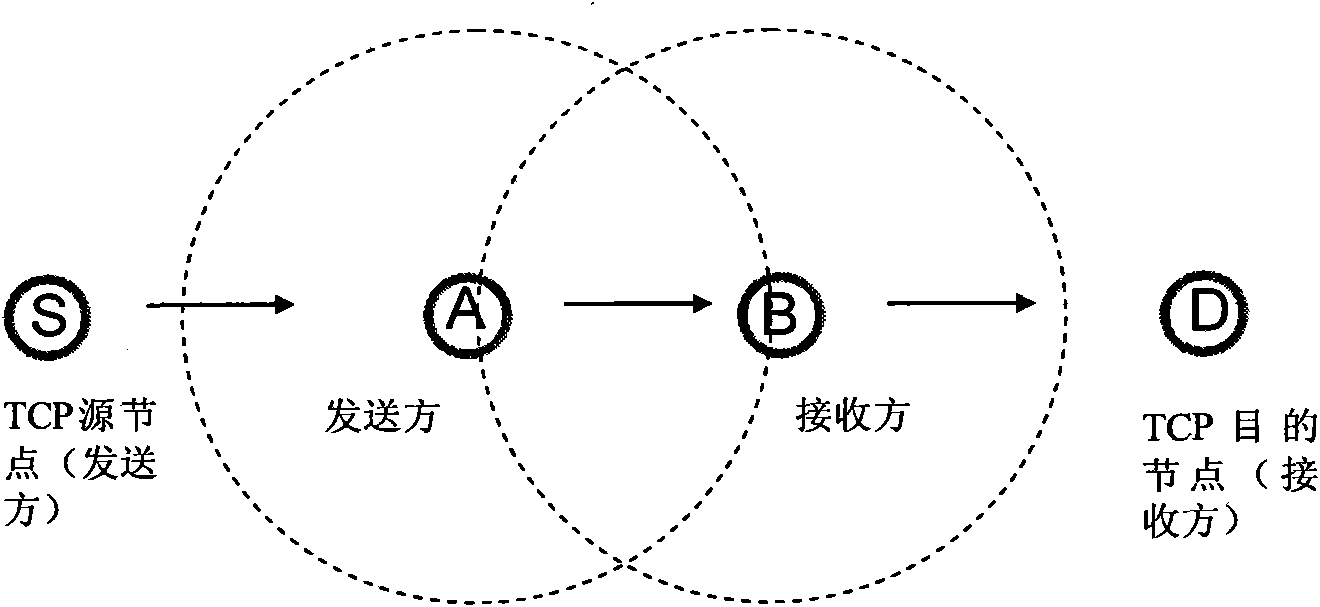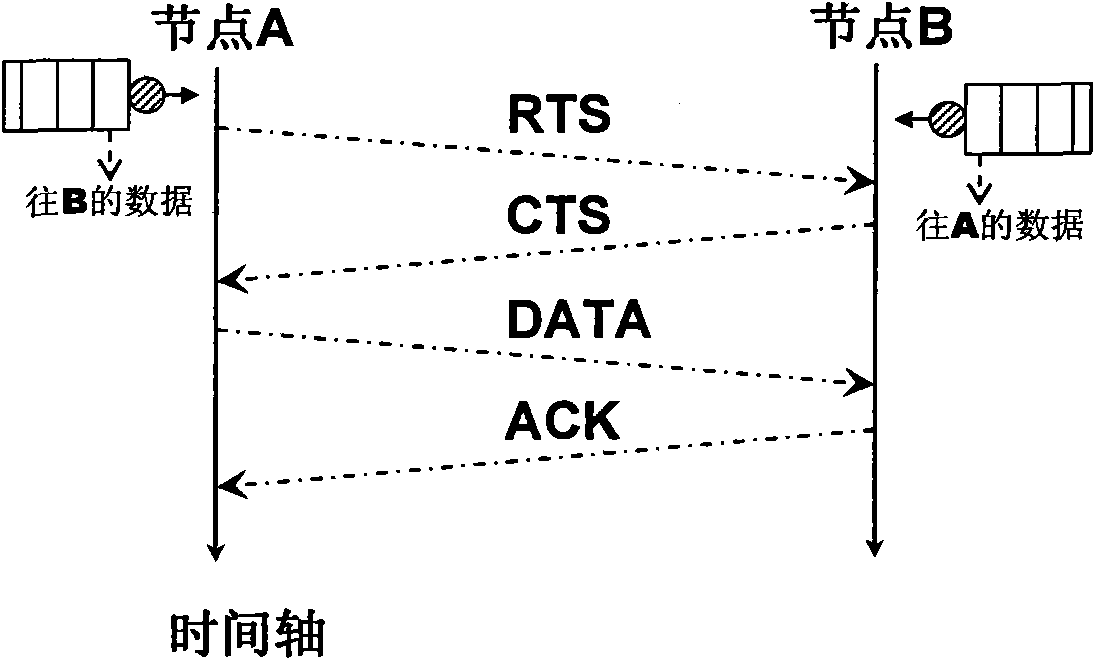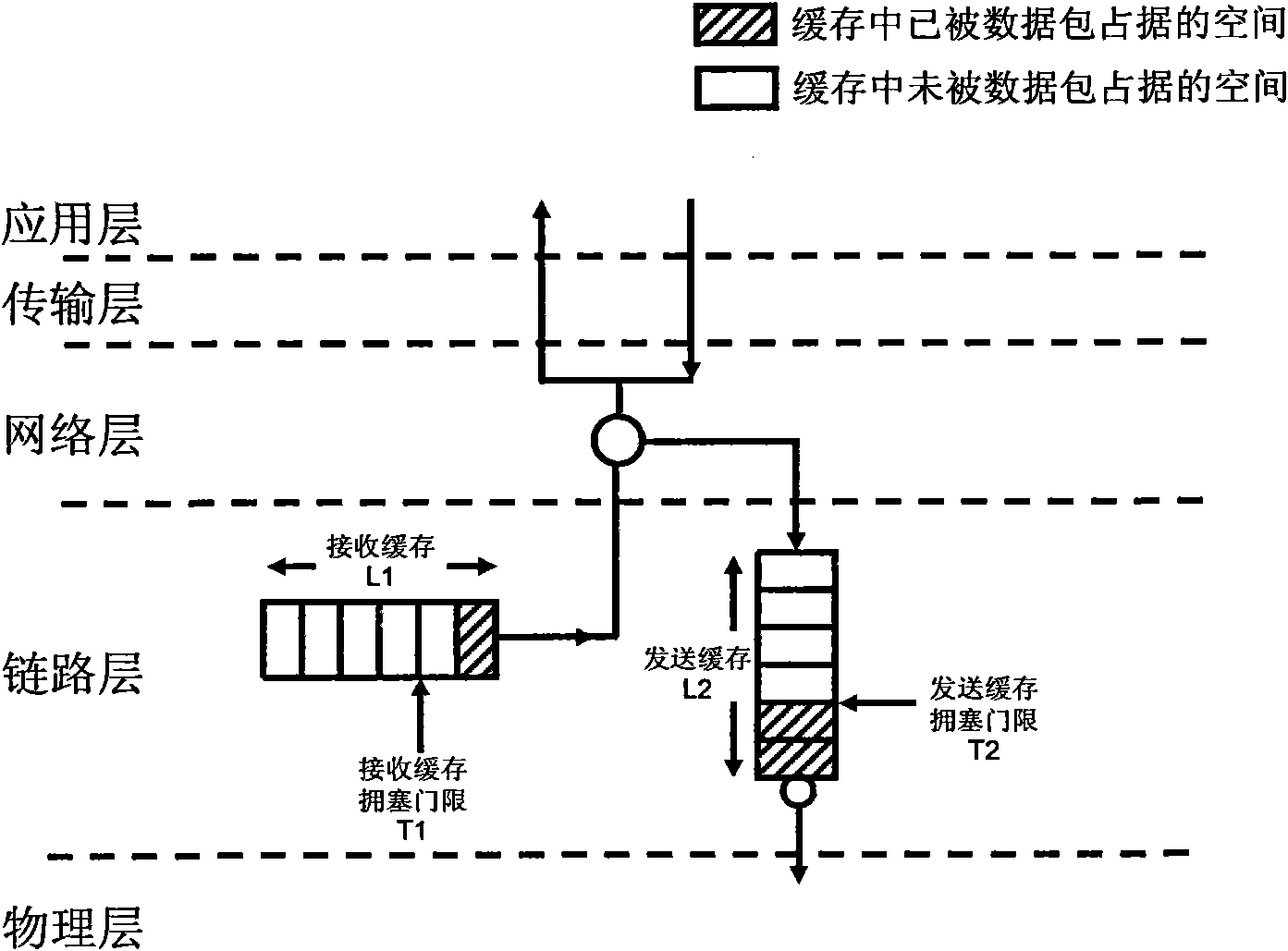Improved request-to-send (RTS)/clear-to-send (CTS)-based method for controlling congestion of multi-hop wireless network
A multi-hop wireless network and congestion control technology, applied in the field of multi-hop wireless network congestion control based on RTS/CTS, can solve the problems of low TCP transmission rate, reduced TCP congestion window, and reduced end-to-end throughput, etc. Small modifications, easy to update effects
- Summary
- Abstract
- Description
- Claims
- Application Information
AI Technical Summary
Problems solved by technology
Method used
Image
Examples
Embodiment Construction
[0030] The present invention will be further described below in conjunction with the accompanying drawings and embodiments, but the protection scope of the present invention is not limited to the scope described in the embodiments.
[0031] The RTS / CTS handshake mechanism has been widely used to solve the problem of hidden terminals in wireless networks. Such as figure 2 As shown, the RTS / CTS handshake mechanism (the original handshake mechanism) stipulates that: before node A officially sends a data packet to the adjacent node B, it must first send an RTS request frame to node B; after node B receives the RTS, if node A B thinks that there is no hidden terminal around it, and node B returns a CTS reply frame to node A; otherwise, node B does not make any response; only after receiving the CTS reply frame returned by node B, node A can send a data frame (DATA ); and Node B needs to send a reply acknowledgment frame (ACK) to Node A after receiving the data frame from Node A. ...
PUM
 Login to View More
Login to View More Abstract
Description
Claims
Application Information
 Login to View More
Login to View More - R&D
- Intellectual Property
- Life Sciences
- Materials
- Tech Scout
- Unparalleled Data Quality
- Higher Quality Content
- 60% Fewer Hallucinations
Browse by: Latest US Patents, China's latest patents, Technical Efficacy Thesaurus, Application Domain, Technology Topic, Popular Technical Reports.
© 2025 PatSnap. All rights reserved.Legal|Privacy policy|Modern Slavery Act Transparency Statement|Sitemap|About US| Contact US: help@patsnap.com



